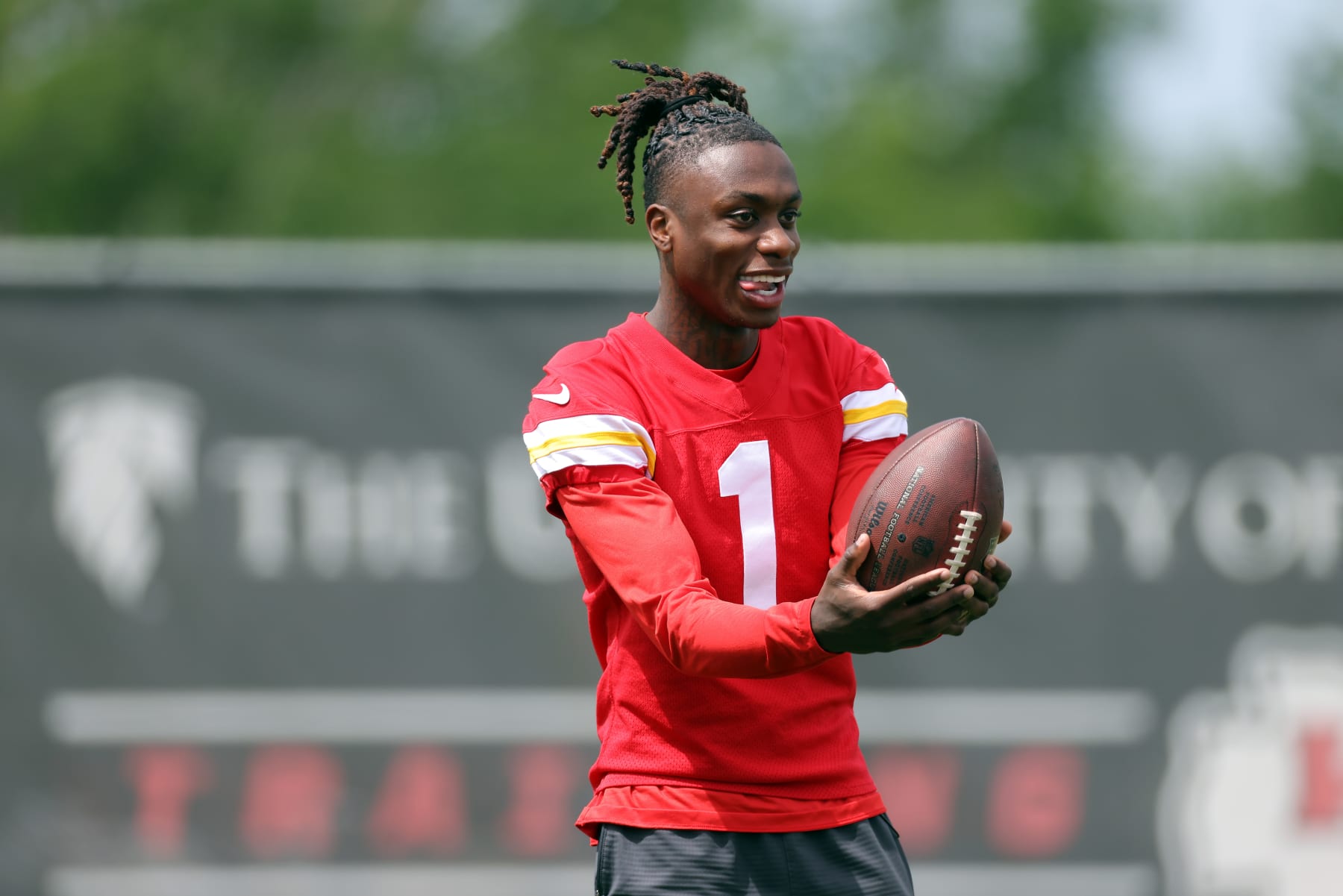NFL
Best- and Worst-Case Scenarios for 8 Most Polarizing NFL Rookies This Season

Extremes. They’re so often on display in the NFL, especially among rookies.
And with these eight first-year players in particular, those extreme potential 2024 results could easily be very, very good or very, very bad.
Let’s summarize the best- and worst-case scenarios for these particularly polarizing rooks.
Polarizing because: The No. 3 overall pick is just 21 years old coming off only two seasons as a starter at North Carolina, and he’s prone to big mistakes. That said, he possesses every tool you want to see in a future franchise quarterback.
Best case: The Patriots give Maye some time to settle in and develop with limited support in that offense, and he eventually flourishes late in the year to set up a potential breakout 2025 campaign for him and the organization.
Worst case: A team low on patience throws Maye to the wolves too early, and a horrendous supporting cast either leads to broken confidence, broken bones, or all of the above.
Polarizing because: The 10th overall pick led Michigan to considerable success the last two seasons, and in the right system he could do the same at the NFL level. That said, his college numbers weren’t mega, and he might not have the arm strength to take over games in the pros.
Best case: Either Kevin O’Connell changes the Vikings offense dramatically and McCarthy excels, or McCarthy excels by adapting quickly to an offense that—by 2023 standards—will ask him to do a heck of a lot more than he had to do at Michigan.
Worst case: O’Connell is too stubborn and McCarthy pays the price, or McCarthy is too inflexible and O’Connell pays the price. Regardless, something likely has to give.
Polarizing because: He made history by showing off his unmatched speed at the combine and has a solid resume coming out of Texas, but the No. 28 overall pick may have to work hard to overcome a size disadvantage and a bad drop habit.
Best case: Patrick Mahomes’ presence helps him overcome those issues, and he shines within an elite offense right off the bat.
Worst case: A lack of talent elsewhere at receiver in Kansas City puts too much on Worthy’s shoulders early on, and he’s shaken by a poor start if not a demotion.
Polarizing because: The mega-versatile No. 13 overall selection delivered in three straight seasons at Georgia, but statistically he was at his best as a freshman in 2021. On top of that, the four other tight ends drafted in the top 15 in the last 20 years—Kyle Pitts, T.J. Hockenson, Eric Ebron and Vernon Davis—have generally and thus far failed to take off as game-changers.
Best case: Unlike all four of those aforementioned tight ends, Bowers scores more than three touchdowns as a rookie in a tough-to-gauge but potentially talented Raiders offense.
Worst case: Opponents take advantage of his undersized frame, and he struggles mightily as a result of that and the Raiders’ shaky quarterback situation during a confidence-shaking rookie campaign.
Polarizing because: Always a right tackle in college, the 29th overall pick will move to left tackle and presumably start immediately on Dak Prescott’s blind side. Some may believe that’s a huge risk, especially because he wasn’t even an offensive lineman to start his college career. That said, his size and physical abilities are hard to miss.
Best case: Guyton steps in for Tyron Smith and dominates with his 6’8″, 322-pound frame.
Worst case: He’s overwhelmed by the transition to the left side with almost no margin for error in an all-or-nothing season for Prescott and the Cowboys, and that experience damages him long-term.
Polarizing because: Like Guyton, he’s about as physically enticing as an offensive lineman gets. The No. 18 overall pick is 6’8″, 340 pounds with shocking athleticism. That said, he has eight career college starts under his belt and needs significant development at the NFL level.
Best case: Both Orlando Brown Jr. and Trent Brown stay healthy and produce to a satisfactory level throughout the 2024 season so that the green Mims doesn’t have to see the field at all.
Worst case: Either Brown goes down for a significant period and Mims is forced into action before the Cincinnati staff has been able to coach him up enough.
Polarizing because: The No. 21 overall pick recorded just 11.5 sacks in three college seasons, causing many to wonder if he can execute despite the fact he’s a wildly awesome athlete who put on a show at the combine.
Best case: Jaelan Phillips, Bradley Chubb and Shaquil Barrett deliver on the edge for Miami, giving Robinson a chance to get acclimated before making an impact down the stretch for a contending team.
Worst case: Lingering major injuries prevent Phillips and/or Chubb from factoring in early on, Barrett can’t revive his career at the age of 31, and the 21-year-old Robinson is given too much too early.
Polarizing because: While he’s extremely versatile and coming off two strong seasons at Iowa, the No. 40 overall selection might not have a clear home in the NFL. He hasn’t played much man coverage as a cornerback, and there’s also no guarantee he’ll come through if he transitions to safety.
Best case: DeJean comes through with a little less pressure in the slot as a rookie and stands out on special teams while first-rounder Quinyon Mitchell and the team’s veteran defensive backs generally hold things down.
Worst case: Injuries force him into action at multiple positions, and he never finds that clear home as a rookie and is in limbo entering 2025.










